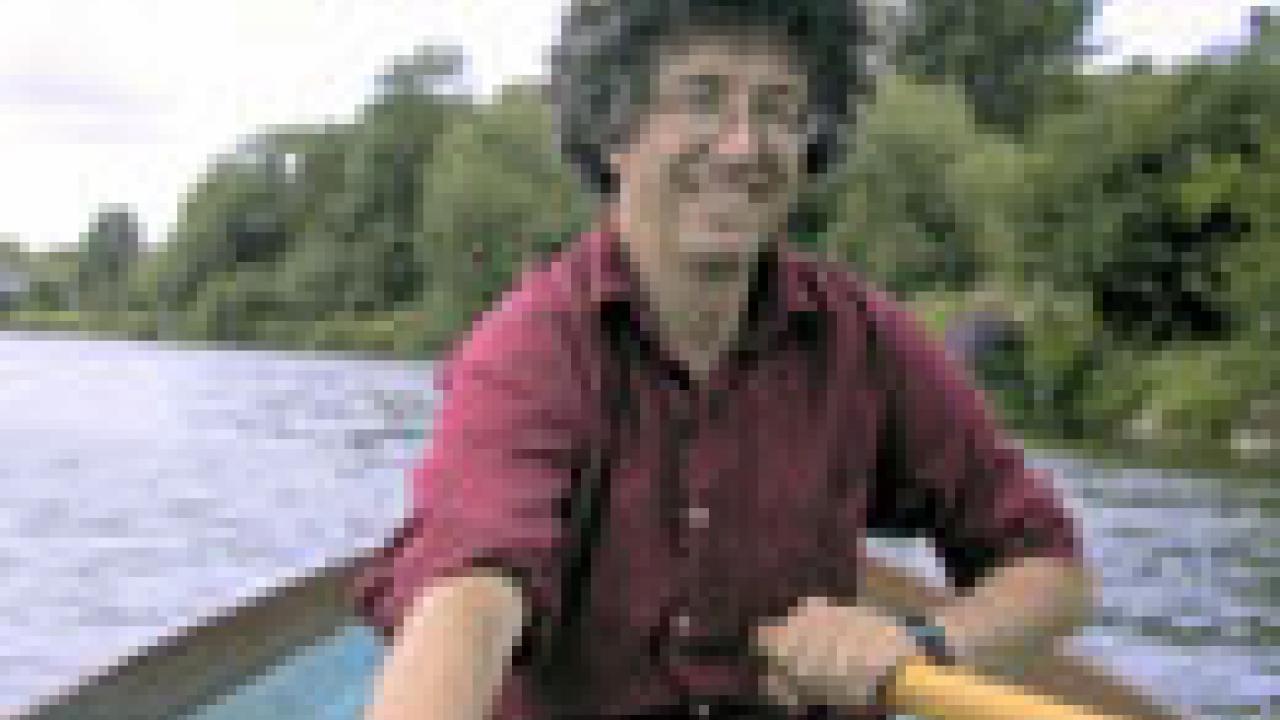Professor Alan Hastings is a pioneer of space and time — but he is hardly out of this world.
Rather, Hastings, a theoretical ecologist, explores the dynamics of how earthly populations move and change in a wide variety of real-world environments.
"Theoretical work lets you see the common aspects of most systems, and how you can transfer between them," said Hastings, a professor in Environmental Science and Policy.
It is not all about theory — results matter, too. And so, Hastings has delivered compelling research findings on salt marsh grass invasions in San Francisco Bay, coral reefs and climate change in the Caribbean, and flour beetles in laboratory jars, to name but a few projects.
With 30 years of experience on such topics, Hastings is one of the most prolific experts in his field. In recognition, the Academic Senate this year awarded him the Faculty Research Lectureship, the highest senate honor for scholarly research.
On May 1, Hastings will deliver the annual Distinguished Research Lecture from 7 to 8 p.m. in the Activities and Recreation Center Ballroom. Titled "Time: The Next Frontier in Ecology, " his talk will address the theoretical ecology of intermediate timescales.
'New and exciting ideas'
On campus, Hastings is known for his colorful Hawaiian shirts and a passion for biking to work. He said he often tackles difficult theoretical problems when he is biking or doing something likewise mundane.
"A lot of (my work) has to be done subconsciously, like riding my bike home thinking about something or waking up in the middle of the night," said Hastings, acknowledging that ideas also emerge from conversations with biologists and students in his classes.
Hastings is especially interested in using mathematical biology for modeling and integrating diverse disciplines. Several of his more than 180 peer-reviewed papers are considered classics. He is the former president of the Society for Mathematical Biology, and has edited the Journal of Mathematical Biology for the last 13 years. In 2006, Hastings received the Robert H. MacArthur Award, the highest honor given by the Ecological Society of America.
"I would rank him as one of the top mathematical ecologists worldwide," said Professor Mark Lewis, a University of Alberta mathematical biologist. "He has a very strong record of coming up with new and exciting ideas in theoretical ecology, applying them to biological systems, and communicating them effectively to a wide audience."
Professor Philip Maini, an Oxford University mathematical biologist, said of Hastings, "It is clear to anyone working in the general field of mathematical modeling in biology and ecology that Alan has made very significant contributions."
For example, Maini noted Hastings' work on the genetic processes of species invasions and how habitat fragmentation, overfishing and marine reserves affect populations.
There is plenty for him to work on. Hastings is currently a principal investigator or co-investigator on seven grants totaling more than $1.87 million. These studies range from researching the dynamics of marine-protected areas in the Bahamas, the effect of wind-driven upwelling on marine populations in Bodega Bay, and the spatial distribution of invasive cord grass in San Francisco Bay.
"One challenge is trying to know all the analytical tools that you need, and also understanding enough of the biology," Hastings said of bridging various disciplines. "So I try to do a lot of work collaboratively. The big advantage of UC Davis is that it's a place where collaboration across departments is really encouraged."
A native of Long Island, N.Y., Hastings received a doctorate in applied mathematics from Cornell in 1977 and joined the UC Davis mathematics department in 1979. He found his way to the environmental science and policy department, which he chaired from 1992 to 1998.
He tries to integrate math and ecology as much as possible in the belief that math models play a fundamental role in ecology. Hastings intends to elaborate on this issue in the new journal Theoretical Ecology — he will serve as the editor-in-chief of this publication.
"Models and theory allow you to distill things to their essence and try to figure out the important parts so you can begin to make predictions in complicated systems," he said.
He likens the creation of models to making maps for different purposes. "You include the details and scale that are relevant to the particular problem, and modeling is really the art of knowing what to leave out."
He has trained 16 doctoral students and 22 post-docs. These mentoring experiences, he said, brings him nachas, a Yiddish word that means "the pleasure derived from the achievements of one's children."
Erin Loury is a News Service writing intern.
Media Resources
Clifton B. Parker, Dateline, (530) 752-1932, cparker@ucdavis.edu
